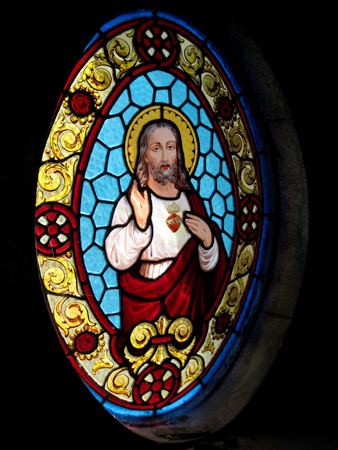
Documenting Recoleta Cemetery in Buenos Aires since 2007
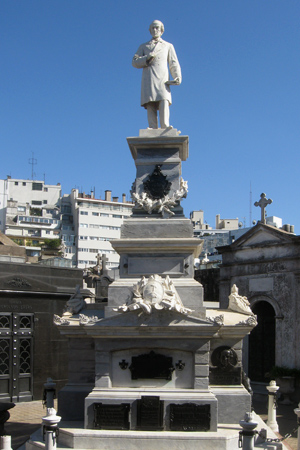
Juan Bautista Alberdi lost his mother during his birth in 1810. Then at the age of 11, his father passed away. Soon after, Alberdi left his native province of Tucumán after receiving a grant for studies in Buenos Aires. But he wasn’t always thrilled with education. Abandoning school for a bit to pursue interests in music, he eventually returned & received a degree in law. Juan Facundo Quiroga offered to pay his further studies in the USA, but at the last moment Alberdi decided not to board the ship.
Remaining in Buenos Aires, Alberdi formed a literary group with Marcos Sastre to debate local politics & European trends. Hugely successful, a loosely-veiled criticism of Juan Manuel de Rosas forced Alberdi into exile in Montevideo. After a brief stay in Paris where he met José de San Martín, Alberdi decided to move to Valparaiso & worked as a lawyer while writing articles for Chilean newspapers.
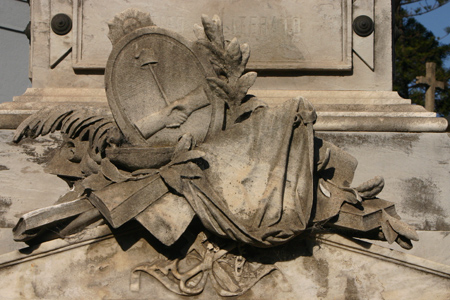
Upon hearing of the defeat of Rosas, Alberdi quickly wrote his most influential book: “Bases y puntos de partida para la organización política de la República Argentina” or “Foundations & Points of Reference for the Political Organization of the Argentine Republic.” Sent to Urquiza, the book outlined a basis for a constitution that would be adopted the following year.
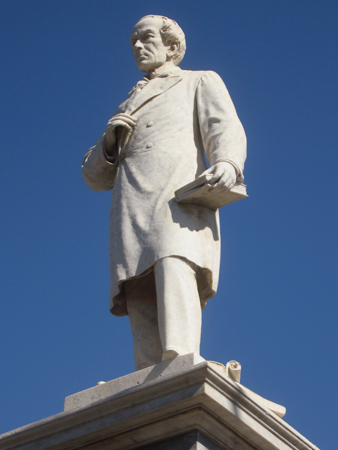
Fully supporting Urquiza’s confederacy, Alberdi was sent to Europe as an official representative of Argentina. During the 24 years he lived abroad, Alberdi met many foreign leaders & gained the new nation the recognition it desired since the days of Rivadavia. But when Bartolomé Mitre defeated Urquiza in 1861 the Confederacy came to end as did Alberdi’s employment. Mitre refused to pay him two years of salary or even his return passage!
Again living in exile, Alberdi supported Paraguay in the War of the Triple Alliance based on the fact that English capital seemed to be behind the conflict. He always stood for law & justice over economic manipulation of politics. Only in 1879 under the presidency of Nicolás Avellaneda could Alberdi finally return to Argentina as a Representative in Congress for his native province of Tucumán.
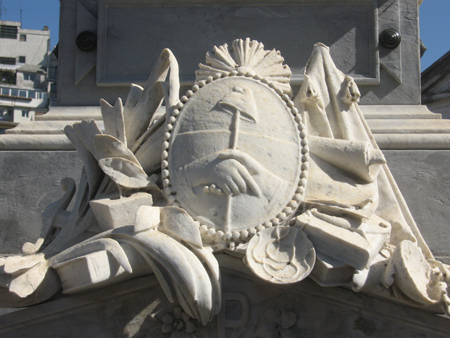
Mitre used his influence to oppose Alberdi constantly. Roca decided to name Alberdi as Ambassador to France, but he failed to receive approval from Congress due to intervention from Mitre. Disheartened, he left again for France in 1881 & died there three years later. Alberdi’s remains were repatriated in 1889 to Recoleta Cemetery but moved again in 1991 to the provincial government building in San Miguel de Tucumán (photo below). The quote on his new tomb translates to: “Will that is not educated for peace is capable of neither liberty nor government.”
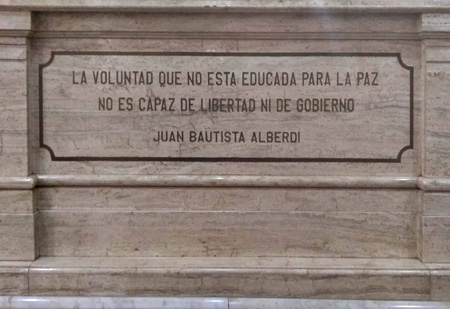
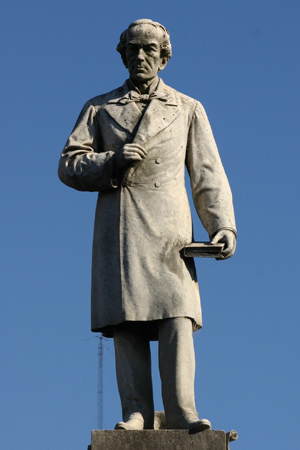
This crypt was declared a National Historic Monument in 1946.
Update (Oct 2020): While the topic of Freemasons & their legacy in Argentina is not a focus of this blog, the former tomb of Alberdi has acquired new importance as a cenotaph. Active for Freemasons around the world, the Gran Logia Argentina paid for the tomb’s restoration in 2017 & donated a plaque to commemorate Alberdi’s service:
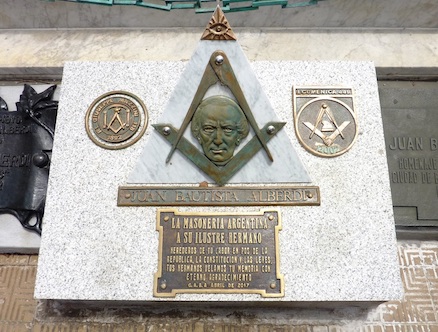
Images shown are a mix of photos taken before & after restoration.
5 Comments
After filming for Globe Trekker on a hot & steamy February afternoon earlier this year, producers couldn’t give me a firm estimate about the release date. I guessed October… just about right. The Buenos Aires city guide episode aired in Europe at the end of October & at the beginning of November in the US.
I liked that the segment focused on important figures other than Eva Perón. Obviously her life (& death) story draw many people to the cemetery. But after years of documenting & guiding there, it’s refreshing that Roca could share a little of the spotlight along with Firpo & Rufina. And that’s my patented Rufina casket lid slide move. No copying!
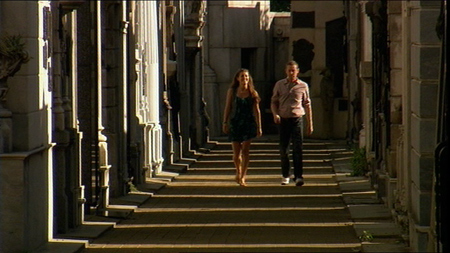
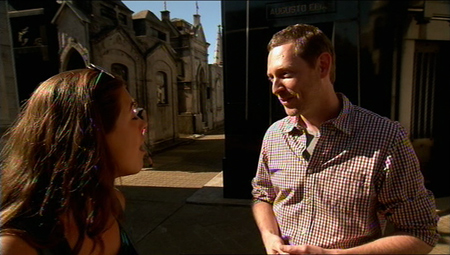
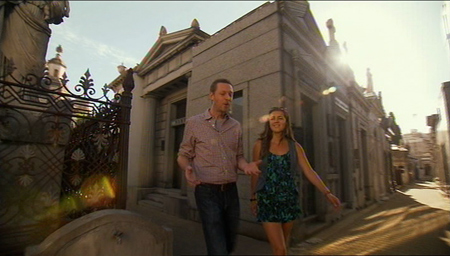
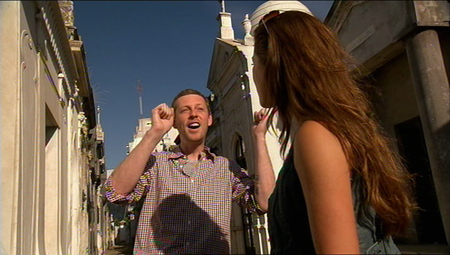
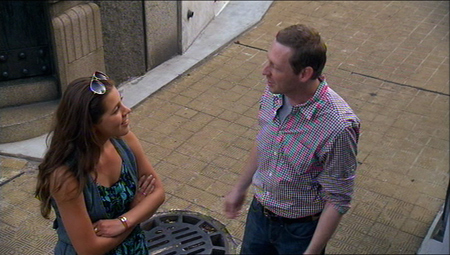
Look for the episode on your local PBS station or online!
5 Comments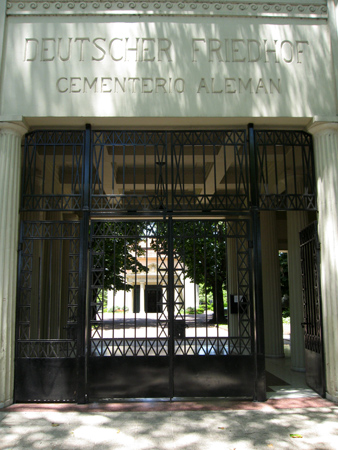
The Cementerio Alemán opened along with its neighbor, the British Cemetery, in 1892. German Protestants had the same difficulty as other non-Catholic immigrant groups in finding a suitable place for burials. Hungarian architect Juan Kronfuss designed the entrance in 1926, & the chapel contains extraordinary stained glass windows from Franz Mayer in Munich. The greenery & perfectly manicured plots make for a nice break from the hectic vibe of Chacarita.
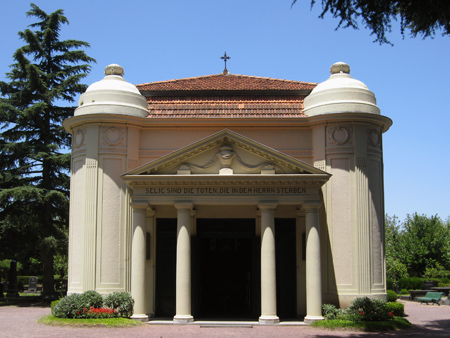
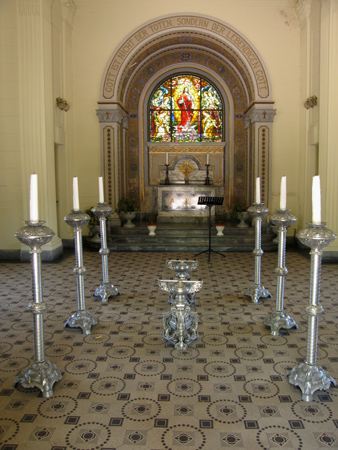
One of its most famous graves belongs to Capt. Hans Wilhelm Langsdorff, commander of the armored vessel Admiral Graf Spee. Damaged in the 1939 Battle of the River Plate off the coast of Montevideo, Langsdorff scuttled the ship & his crew were taken prisoner. Transferred to Buenos Aires, Langsdorff committed suicide two days later. Some of the crew passed away—waiting out the end of the war in either Argentina or Uruguay—& are also buried here.
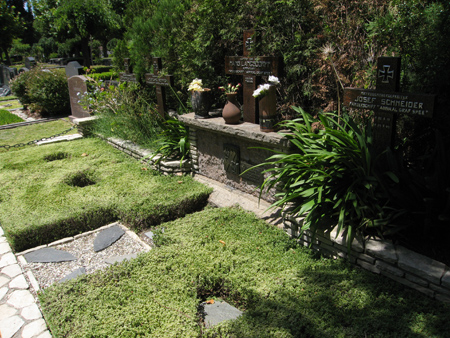
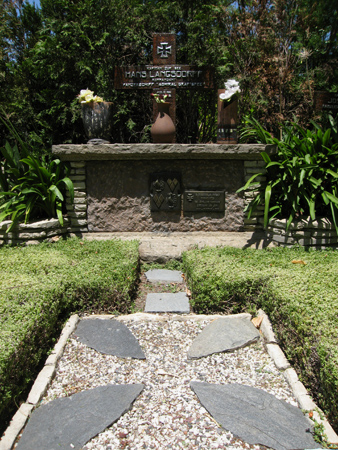
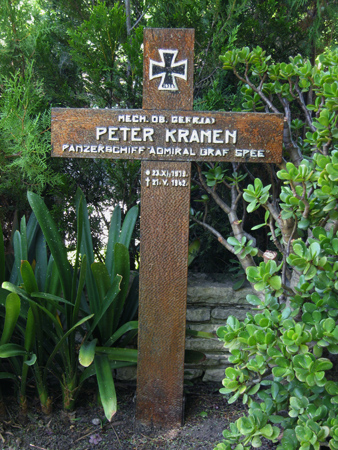
The crew of the Graf Spee are not the only Nazis interred there. Rodolfo Freude formed part of Perón’s secret service & is thought to have been one of the organizers behind ODESSA. He died in 2003, & the full story of bringing Nazis & Nazi wealth into Argentina may have died with him.
Other notable figures: Swimmer Jeanette Campbell was the first Argentine to win an Olympic medal… ironically at the 1936 Berlin games. Photographer Annemarie Heinrich took some of the most well-known portraits of celebrities & politicians, including my favorite images of Tita Merello & Eva Perón:
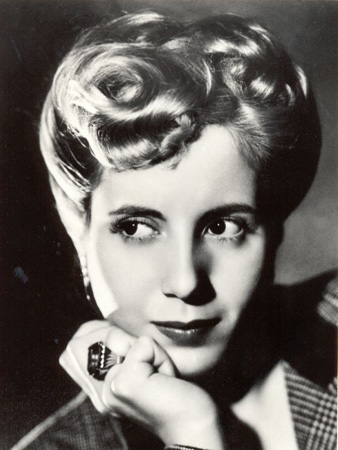
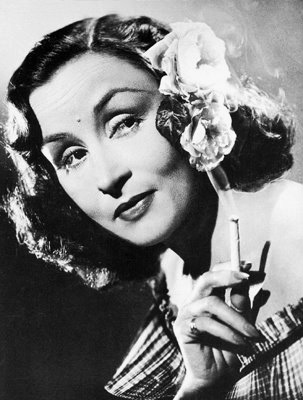
Architect Carlos (Karl) Nordmann designed the Legislature of the city of La Plata, along with its museum & other fine works throughout the country.
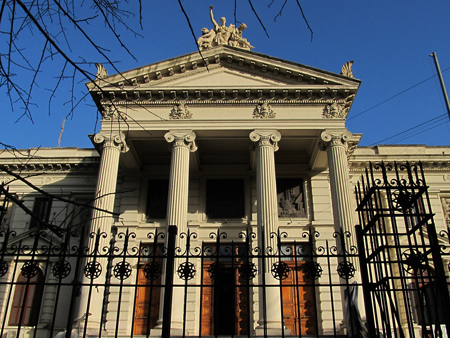
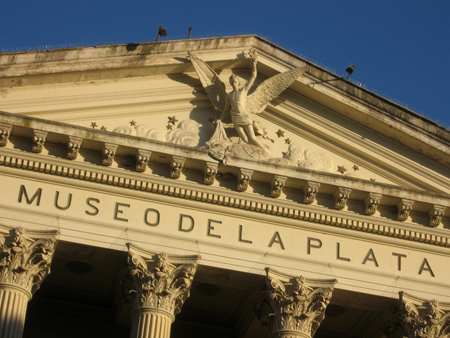
Alexander Asboth, a Hungarian immigrant to the USA, commanded Union troops during the Civil War. He later became US ambassador to Argentina & Uruguay, dying in Buenos Aires. Asboth was initially buried in the Cementerio Alemán, but his remains were transferred to Arlington National Cemetery in 1990. The original tombstone can be found by the entrance:
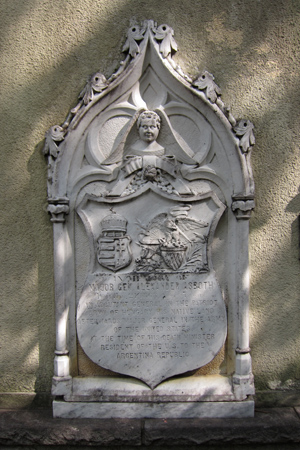
A few other pics… there are some fantastic works of art, mostly near the entrance:
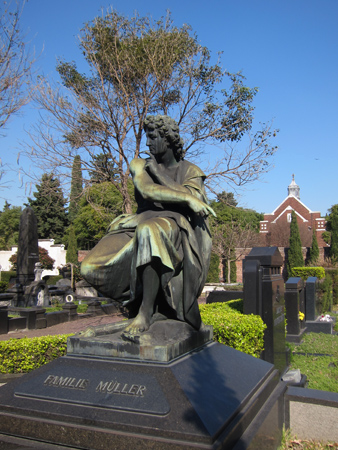
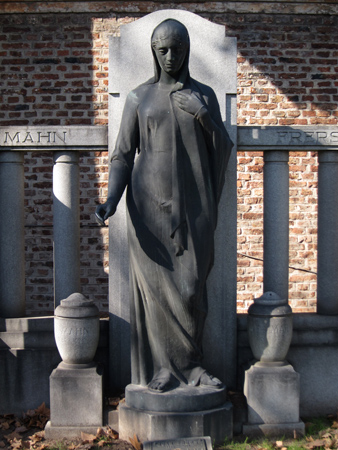
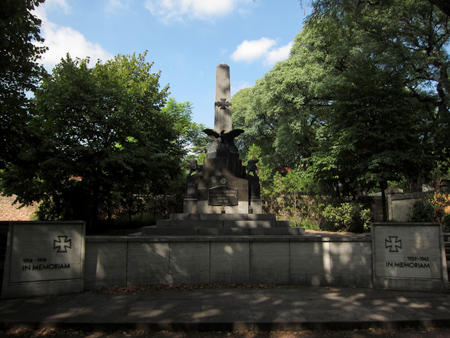
Although sharing the same gigantic plot of land as Chacarita Cemetery, walls separate the Cementerio Alemán from Chacarita. The only entrance is along Avenida El Cano, near the intersection of Avenida del Campo.
—————————————————
Other Buenos Aires cemeteries: Cementerio del Sur • Chacarita • San José de Flores • Cementerio de los Disidentes • Cementerio Británico • Cementerio Alemán
Photo of the Legislatura in La Plata by Marcelo Metayer.
Leave a Comment